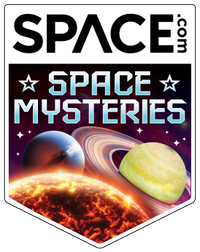News
Science & Astronomy


How can we save Earth from the sun’s searing death throes?
(Image credit: aryos via Getty Images)
In about 5 billion years, the sun will die.
But as it ages, it will get brighter and hotter, and by about 500 million years from now, our star will have heated Earth beyond redemption. But is there any way to save our planet from its disastrous demise?
Indeed, there is. Our distant descendants could steal energy from Jupiter’s orbit and give it to Earth. But if they got it wrong, they’d send our planet careening out of the solar system.
Earth has held stable in its orbit for over 4 billion years, but it faced a precarious birth. The early solar system was filled with dozens, if not hundreds, of solid bodies called planetesimals, all of which were competing to accrete as much material as possible and become full-fledged planets before the others stole it.
Related: Will our solar system survive the death of our sun?
In that chaos, the planetesimals collided, swung too close to each other and got whipped by the growing gravitational power of the gas giants. Of those dozens of potential planets, only eight survived; the rest were either launched into the sun or ejected into interstellar space.
Things won’t be so pretty in the future, either. Every day, the sun gets slightly hotter and brighter — a natural byproduct of the buildup of helium from the fusion of hydrogen in its core. In about 500 million years, the sun will become so hot that Earth’s oceans will evaporate, plate tectonics will grind to a halt, and so much carbon dioxide will build up in the atmosphere that our planet will look like Venus.
To save ourselves, we’d have to play the same kinds of gravitational games that our young solar system was accustomed to.
A deadly dance
Imagine you’re standing on railroad tracks and a train is headed right for you. If you wanted to match your speed with the train’s, you could just let it smash into you — and while some parts of you might achieve the required velocity, it probably wouldn’t be in the way you intended. But instead, say you had a perfect bouncy ball with you — a ball that could never, ever break. (This is needed to make this analogy work, but don’t try this at home.)
If you were to throw the ball at the train, it would hit the train and bounce back at you much faster than you threw it, because it would have its original speed plus the speed of the train. That would slow down the train a bit, but because it would have so much energy available, it wouldn’t even notice. If you were to catch the ball, that energy would transfer to you, accelerating you just a little bit. If you were to repeat the process over and over again, eventually you’d match the speed of the train — safely.
To save Earth, we’d have to raise its orbit, keeping it safely away from the ever-angrier sun. Raising Earth’s orbit would require energy, but thankfully, our solar system has heaps of energy available in the form of Jupiter’s orbit.
Making an orbital version of our train analogy, we could take a rock (any rock would do, but the bigger, the better) and send it toward Jupiter. We could loop that rock around the giant planet, sapping some of its orbital energy and giving it to the rock, which would zoom back toward Earth. Then, we’d repeat the maneuver but in the opposite direction, giving some of the rock’s energy to our planet.
Inch by inch, we could steal energy from Jupiter (which, like the train, wouldn’t even notice) and raise the orbit of Earth, keeping its temperatures nice and stable.
No turning back
But if we got it wrong, we’d have hell to pay. Jupiter has a lot of orbital energy. And with our rock-tossing scenario, we’d be setting up a phenomenon called a resonance effect. Each individual pass of the rock wouldn’t contribute a lot of energy, but if it were to happen regularly, in the same pattern, time after time, then that little bit of energy would reinforce itself, amplifying the effects.
If we weren’t careful, we could give so much energy to Earth that it would achieve solar escape velocity, permanently exiting the solar system. Once gone, it would never come back, doomed to roam the cosmos as a rogue planet. The planet would still have its internal heat, so volcanoes and hot springs would still work — but we’d be locked in permanent night, which would catastrophically chill the atmosphere (not to mention kill all the plants and algae).

If Earth gained too much energy it could exit the solar system for good. (Image credit: Getty )
Astronomers think such resonance scenarios naturally lead to the release of even more rogue planets (and dwarf planets) later in the lives of solar systems. For example, Neptune and Pluto are in resonance, and it’s impossible to predict where Pluto’s orbit will take it past 10 million years. There’s a small chance that Mercury will end up in resonance with Jupiter — and a small chance that in the next billion years, it will simply exit the solar system.
Astronomers estimate that there are somewhere between 0.25 and 10,000 rogue planets for every star, all drifting through the interstellar wastes of the Milky Way. That number is understandably broad, because we have precious few observations of rogue planets, and so it’s difficult to construct solid statistics. But let’s hope that our future descendants don’t inadvertently add one more to the list.
Learn more by listening to the “Ask A Spaceman” podcast, available on iTunes and askaspaceman.com. Ask your own question on Twitter using #AskASpaceman or by following Paul @PaulMattSutter and facebook.com/PaulMattSutter.
Join our Space Forums to keep talking space on the latest missions, night sky and more! And if you have a news tip, correction or comment, let us know at: [email protected].
Breaking space news, the latest updates on rocket launches, skywatching events and more!
Paul M. Sutter is an astrophysicist at SUNY Stony Brook and the Flatiron Institute in New York City. Paul received his PhD in Physics from the University of Illinois at Urbana-Champaign in 2011, and spent three years at the Paris Institute of Astrophysics, followed by a research fellowship in Trieste, Italy, His research focuses on many diverse topics, from the emptiest regions of the universe to the earliest moments of the Big Bang to the hunt for the first stars. As an “Agent to the Stars,” Paul has passionately engaged the public in science outreach for several years. He is the host of the popular “Ask a Spaceman!” podcast, author of “Your Place in the Universe” and “How to Die in Space” and he frequently appears on TV — including on The Weather Channel, for which he serves as Official Space Specialist.
>>> Read full article>>>
Copyright for syndicated content belongs to the linked Source : Space.com – https://www.space.com/earth-become-rogue-planet-sun-death






























